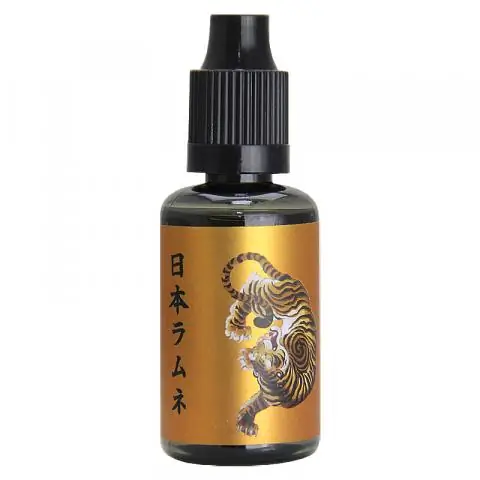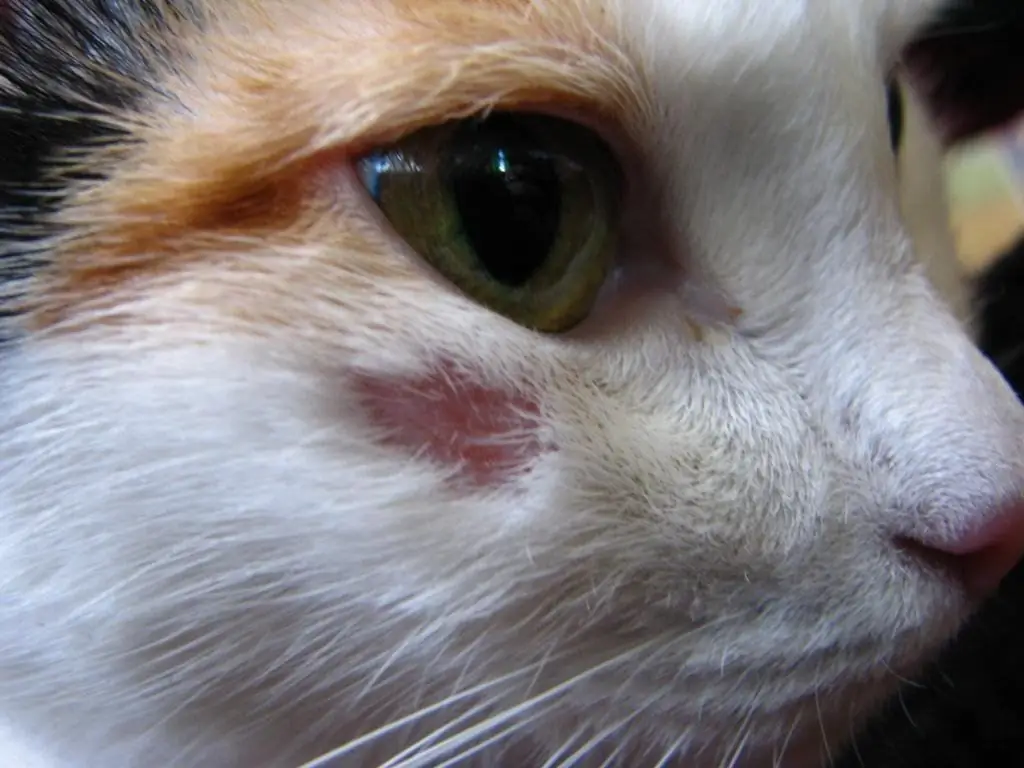
Table of contents:
- Author Bailey Albertson [email protected].
- Public 2024-01-17 22:26.
- Last modified 2025-06-01 07:32.
Cucumber Masha F1: we grow an early and productive hybrid

Gherkins are especially popular with gardeners. Their excellent taste is combined with an attractive appearance. Hybrid Masha F1 stands out among the gherkins for the strength of the cucumber and for a decent period of preservation of appearance and taste after being removed from the whip.
Content
- 1 Brief history of the variety
-
2 Characteristics of the variety Masha F1
- 2.1 Photo gallery: cucumbers Masha F1
- 2.2 Table: the advantages and disadvantages of cucumber Masha F1
-
3 Planting and care
- 3.1 Seed preparation
- 3.2 Precursors of culture
- 3.3 Description of planting seedlings
-
3.4 Planting seeds in open ground
3.4.1 Video: planting cucumber seeds in open ground
- 3.5 Planting seedlings in the greenhouse
- 3.6 Video: planting cucumbers in a greenhouse with seedlings
- 3.7 Bush formation
-
3.8 Fertilization and watering
3.8.1 Table: fertilization and watering of the Masha F1 hybrid
-
4 Diseases and pests
-
4.1 Table: diseases of the hybrid Masha F1
4.1.1 Diseases of the hybrid Masha F1 (photo gallery)
-
4.2 Table: pests of the Masha F1 hybrid
1 Photo gallery: pests of the Masha F1 hybrid
-
- 5 Harvesting and storage
- 6 Variety reviews
Brief history of the variety
The hybrid was bred by breeders of the Dutch company MONSANTO HOLLAND BV and in 2000 was registered in the State Register of Breeding Achievements Approved for Use.
Characteristics of the Masha F1 variety
Cucumbers are pimply, large-tuberous, cylindrical, dense, dark green in color. The length of the zelents is 9-11 cm, and the diameter is 3-3.5 cm.
Up to 11 kg of cucumbers are harvested from one square meter. The flowers, and therefore the fruits, are located in the axils of the leaves. Zelentsy are strong on the bite, the taste is typically cucumber, sweetish. There is no bitterness in the fruit, it is at the genetic level. The first cucumbers ripen 37-39 days after germination, and a few days later the mass harvest begins.
Photo gallery: cucumbers Masha F1
-

Zelentsy on the lash - Cucumbers grow in bunches
-

Cucumber Masha F1 - Zelentsy varieties Masha F1 pimply and large tubercles
-

Cucumber Masha F1 cutaway - Cucumber pulp Masha F1 without voids
Table: advantages and disadvantages of cucumber Masha F1
| Benefits | disadvantages |
| Early maturity | Demanding weather conditions when landing |
| High yield | |
| Scab immunity | |
| Weak susceptibility to powdery mildew and mosaic | Weak root system of seedlings |
| There is no need for pollination of the ovary, therefore it is grown both in the open field and in greenhouses, hotbeds | |
| Simple farming techniques |
Planting and leaving
Caring for cucumbers is not very difficult, but it is worth remembering some important nuances.
Seed preparation
Seeds from Seminis (brand of MONSANTO HOLLAND BV) and some domestic producers are treated with Thiram pesticide to suppress spores of fungal diseases and are emerald or green in color, although they may be different.

Producers often treat seeds of hybrids with the pesticide Thiram.
It is generally recommended not to soak such seeds to avoid washing the pesticide off the surface of the seed. The declared germination rate of seeds of hybrids is 95%. In this form, with the sprouts that have appeared, they are ready for planting. This can be planting both on seedlings and on a permanent place in open ground.
Precursors of culture
Now let's remember what grew in the garden that you mapped out for planting a hybrid last year. Do not plant the crop in the beds where zucchini, squash, pumpkin, and melons grew in the previous season. The best precursors for Masha F1 cucumber are:
- legumes;
- white cabbage and cauliflower;
- onions on a turnip.
This applies to both open ground and greenhouse. If the area for planting is limited and it is not possible to create the correct crop rotation, then it is necessary to apply an increased amount of fertilizer and organic matter when preparing the soil, but this will not save the planted plant from diseases and pests accumulated by the previous "wrong" crop.
Description of planting seedlings
The main advantage of the seedling method is the ability to get an earlier harvest. The plant also creates a favorable and controlled environment - temperature, humidity, lighting.
After sprouting, the temperature should be lower than 18 degrees to prevent the seedlings from pulling out. About a week before planting seedlings on the beds, it is a good idea to harden them, for example, take them out to the balcony for several hours a day.
Masha F1 has a weak root system in the initial period of growth. Therefore, be very careful when transplanting seedlings to a permanent place. You can minimize the risk by planting the seed in a sufficiently large container or using peat-humus pots, the volume of which is not less than 0.5 liters.

Cucumbers thrive when planted in peat tablets
The planted seed in 3-4 weeks will develop into a bush with 3-4 true leaves, which is already subject to transplantation, it is not advisable to leave it in the planting container further. For successful survival of seedlings at the place of growth, a soil temperature of at least 10 degrees is needed. If it is still cold by the time the seedlings are planted, then we make the simplest shelter from a film or plastic bottles from under the water.
Planting seeds in open ground
It is better to wait for warm weather, since seeds planted in cold soil will grow weak, lagging plants. Cucumber prefers soil that is light in texture, with a high humus content.

Cucumber seeds are planted in soil with a high humus content
The stages of sowing seeds in open ground are as follows:
- It is recommended that, three weeks before planting, dig up the bed to the depth of a shovel bayonet with the introduction of compost or humus at the rate of one bucket per square meter.
- Wells are being prepared, into which 2 tsp are added. urea, a good handful of humus, all this is thoroughly mixed with the ground.
- Then the hole is poured with water so that the seed covered with earth is then at a depth of 15-20 mm.
- The holes are arranged according to the way the cucumber is grown. With horizontal, when the lashes spread on the ground, it is 60x80 cm, and with vertical on the trellis 100x20 cm.
- The garden sown in this way is mulched and covered with foil until shoots appear.
The bed should be located in a sunny, wind-free place, but it is desirable that a small shadow falls on it during the hottest time of the day, that is, it is well organized to the north of a relatively tall tree or shrub. Cucumber, although a heat-loving plant, does not like the sun, and the leaves can get burned.
Video: planting cucumber seeds in open ground
Planting seedlings in a greenhouse
Of course, earlier and more stable yields are obtained in the greenhouse, but there is one significant disadvantage. The microclimate of the greenhouse does not contribute to the quality of its soil and it is affected by pathogenic microorganisms that are unfavorable for cucumbers, which can greatly harm the seedlings. If the greenhouse is made on a wooden frame, then microorganisms feel great on a tree.
Sulfur checkers are used for disinfection: fungi, as well as insects such as slugs, spider mites and others, die after being treated. Try to eliminate all the cracks in the greenhouse, place the checkers evenly (the instructions for them indicate how much one piece is designed for), set fire to and quickly leave the greenhouse. Close the door tightly behind you. Ventilate after 5 days.
It is necessary to replace the top (5-7 cm) layer of the earth at least once every 2-3 years. Do not be afraid that the soil taken out of the greenhouse will spread the infection, leave the land in the open air, plant a culture unrelated to the cucumber. And fill up the lack of soil in the greenhouse beds with a mixture of loam and compost or rotted manure (preferably horse manure) in a 1: 1 ratio. It is better to do this in the fall, and in the spring to dig up the beds again with the introduction of mineral fertilizers: 30 g of urea, 40 g of superphosphate, 20 g of potash (per 1 square meter). Potash and phosphorus fertilizing can be perfectly replaced by wood ash (1 glass per square meter).
Next, we plant the seedlings according to the same algorithm as described above, except at an earlier date, after preheating the topsoil. This can be achieved by covering the bed with black covering material and spilling the ground with warm water. To maintain the desired temperature at night, it is effective to put one or more large barrels of water in the greenhouse as a heat accumulator.
Video: planting cucumbers in a greenhouse with seedlings
Bush formation
For cucumber Masha F1 it is very important to form the plant correctly. This is achieved by pinching the shoots, ovaries and whiskers, directing creeping shoots in the right direction, removing unnecessary leaves. Hybrid Masha F1 is mainly grown on a trellis. It is convenient both for harvesting and for airing the plant, especially in greenhouse conditions. Hybrid Masha F1 is recommended to form in one stem. For this:
- In the four lower axils of the leaves, remove the shoots and ovaries.
- In the next four sinuses, we leave one sheet with an ovary.
- Then we leave 9-12 sinuses with 2 leaves and 2 ovaries.
- In 13-16 sinuses we leave 3 leaves and 3 ovaries, remove the rest and pinch the growth point, the very crown.
To use all the forces of the plant for the formation of fruits, you must also remove the whiskers, and tie the stem to the support. Pinching is best done with clean sharp scissors, leaving no stumps.
Fertilization and watering
Caring for the Masha F1 hybrid is somewhat different depending on the growing conditions.
Table: fertilization and watering hybrid Masha F1
| Fertilizer | Watering | ||
| Open ground | Greenhouse | Open ground | Greenhouse |
| Top dressing of the plant 5-6 times per season, starting from the appearance of flowers. The first time with a solution of urea (a matchbox for 10 liters of water), then with potash and phosphorus fertilizers. | Alternation of mineral fertilizers such as Kemira Lux (1 tablespoon per 10 liters of water) and organic matter (1 liter of mullein and 200 g of wood ash per 10 liters of water). The interval is 10-14 days. | Watering in the morning or evening, watering rate - depending on the rainfall and soil condition. Loosening the next day after watering or rain. | Every other day, from one to two liters per bush, it is better not at one time. The next day, gently loosening. |
Diseases and pests
Although the variety is resistant to many typical cucumber diseases, under unfavorable conditions the plant can be affected by anthracnose, white rot and other ailments.
Table: hybrid diseases Masha F1
| Diseases | Signs of manifestation | Prevention | Control measures |
| Cucumber mosaic | leaves and fruits become speckled and deformed |
|
Treatment with Fundazol no later than 10 days before the start of picking cucumbers according to the instructions for the preparation. |
| Anthracnose | white or light yellow spots appear on the leaves |
|
Treatment with Hom or Ridomil-Gold preparations according to the instructions for them. |
| Downy mildew | spots of brown color appear on the leaves, later turning into a fluffy bloom | sprinkling the leaves with crushed wood ash | Treatment with Fundazol (according to the instructions). |
| White rot | a white fluffy coating is formed on the affected parts of the plant, including fruits | shelter of bushes when a cold snap sets in in summer |
|
Diseases of the hybrid Masha F1 (photo gallery)
-

Cucumber mosaic - When a mosaic of cucumber is damaged, the leaves become speckled
-

Anthracnose - With anthracnose, characteristic spots appear on the leaves
-

Downy mildew - Downy coating is a characteristic sign of powdery mildew infection.
-

White rot - White rot leads to crop failure
Table: pests of the Masha F1 hybrid
| Pests | Signs of manifestation | Prevention and control measures |
| Aphid |
|
Spraying with infusion of tobacco dust, wood ash, soapy water, Fitoverm preparation (according to the instructions). |
| Thrips |
|
|
| Spider mite |
|
|
| Slug |
|
|
Photo gallery: pests of the hybrid Masha F1
-

Aphid - Aphids like to sit on the inside of the leaf
-

Thrips - When thrips is damaged, cucumber leaves curl
-

Spider mite - A sign of the appearance of a spider mite is a thin cobweb on the back of the leaf.
-

Slug - These "handsome men" can be found in warm and humid conditions.
Harvesting and storage
As already mentioned, the first cucumbers can be harvested 37 days after germination in the greenhouse; in the open field, the period can be longer. By this time, some cucumbers have reached a size of 8-9 cm (typical gherkin). Then the time comes for regular collection of greens, do not let them outgrow.

Masha F1 gherkins are good for blanks
The advantages of the hybrid include a fairly long shelf life - up to 10 days without losing the quality of the fruit, this property is very valuable for those who grow cucumbers for sale. This is the advantage of Masha F1 over the recognized leader of gherkins, the German F1 variety.
Variety reviews
Early ripening, good yields, low susceptibility to diseases, simple agrotechnics of crop cultivation - all this ensures the steady popularity of the Masha F1 hybrid. Gherkins have excellent taste, both fresh and salted are good.
Recommended:
Garden Strawberry Variety Tsaritsa - Features, Care And Other Important Aspects + Photo

Description of the garden strawberry variety Tsaritsa. Advantages and disadvantages. Planting, care and reproduction. Disease and pest control. Harvesting. Gardeners reviews
Garden Strawberry Victoria - Features Of The Variety And Important Nuances Of Growing + Photo

Strawberries or strawberries? And also about Victoria over common sense
Chamora Turusi Variety Of Garden Strawberries - Features, Care And Other Important Aspects, The Difference Between Strawberries And Garden Strawberries + Photo

Everything about the Chamora Turusi strawberry variety: from planting and care to picking berries. Productivity, terms of fruiting, reviews of gardeners
Valentine Cabbage: Characteristic Of The Variety, Rules Of Growing And Care + Photo

Late variety of cabbage Valentina F1: characteristics of advantages and disadvantages; care, planting and rearing; and pest and disease control measures. Video
Deprive Cats And Cats (shearing And Other Species): What It Looks Like, Signs, Treatment Of Kittens And Adult Animals At Home, Photo

How does shingle manifest in cats? The causative agent and types of the disease. Features of the course of the disease. Treatment methods and prognosis. Deprivation prevention. Reviews
